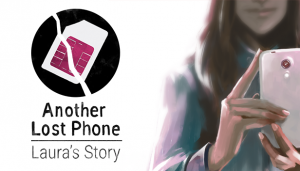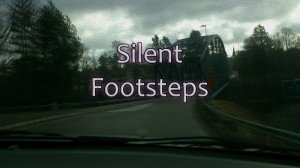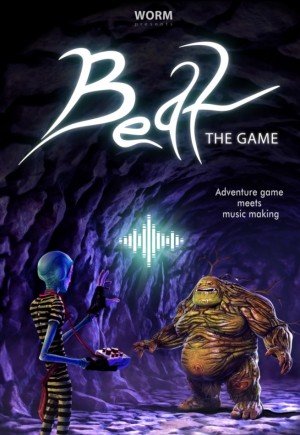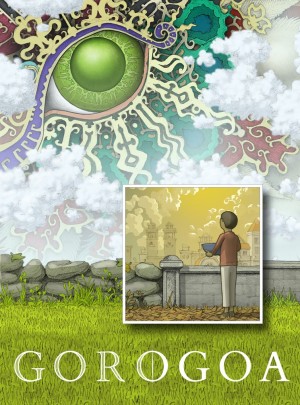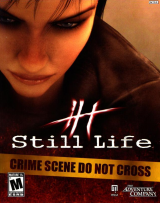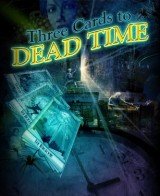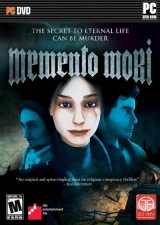Review for The St Christopher’s School Lockdown

The St Christopher’s School Lockdown first started garnering attention with its successful Kickstarter campaign in 2013. At the time, Classroom Graffiti Productions announced its ambitious plans to deliver a narrative-based game centered around a protest by the student body of the titular prestigious private school in Britain. The story in intended to play out across seven episodes, as seen from the viewpoint of seven different characters. With the release of the series debut four years later, the result is an interesting, if somewhat rough-around-the-edges introduction into this world.
Although deemed to be an “episode” by its indie developer, this first installment is a full-length game in its own right, weighing in at nearly 13 hours of play time. It focuses on the character of Kayleigh Bruskin, who is not actually a student at St Chris, but rather a pink-haired con artist who awakens in a battered van parked on the school’s property following a failed scam. In short order, Kayleigh finds her way inside the school, which is surrounded by police. After a bit of searching the empty halls, she encounters the students camped out in the gym and learns that they’re staging a protest against the establishment. (In particular they’re seeking free tuition, self-assessed finals, longer weekends, and no prejudice against the poor.) Kayleigh’s primary concern is laying low until she can determine what to do about her own situation. However, she very quickly becomes the protest's gopher, running various fetch quest errands for different students.
The story takes place in the present across three days, but at various points the events that led to Kayleigh’s arrival are explored. Unlike most adventures that provide backstory through expositional dialog, St Chris takes a more literal approach, flashing back into Kayleigh’s past. The flashback sequences are fully playable and were some of the most enjoyable parts of the game for me. From the beginning you know that Kayleigh wasn’t successful in her con, but through these scenes you find out exactly how her scheme went off the rails. These segments provide a nice level of intrigue and depth that the protest itself is strangely lacking.
In the present, Kayleigh makes the acquaintance of a sizable number of characters. While many of them, such as the charismatic but naïve protest leader Roger and the more worldly anarchist Martin, are set up such that they might come into natural conflict with one another, much of this seems to happen while Kayleigh is elsewhere in the school (presumably for future installments to flesh out in more detail). As such, the actual protest never really comes into focus and seems very low-key, to the point that several characters comment on a lack of media attention. Given that most of the students are depicted as just lounging about in the hallways, the feeling is that of a very relaxed atmosphere instead of a high-tension revolt.
This laid-back student attitude is reinforced by the game’s lack of character animation. The characters are hand-drawn in a graphic novel style with pencil crayon-esque coloring, which gives St Chris a unique look. The style is lovingly applied, especially to the dialog portraits for each character. Unfortunately, except for a handful of notable incidents, the only character animation to be found is that of Kayleigh walking from one place to another.
A similar visual treatment has been used for the locations themselves. As the students have locked themselves in the school, most of the action takes place in its rooms and corridors. Only during the flashback sequences does the game relocate to other areas like an internet café or high society party. From a functional standpoint, several room layouts provide one of the bigger challenges, as it’s not always apparent where exits are. Initially I thought I had searched the entire school and found no one in it because I failed to recognize that the bottom of the screen in one of the rooms led to another entire area of the school. This was not an isolated incident, as several other such rooms popped up throughout.
Finding exits is not the only hotspot hunting you’ll do. Many of the game’s activities require you to backtrack through the school looking for new hotspots that have become available or responses to existing hotspots that have changed. Mousing over a hotspot shows its name and clicking on it presents a series of context-specific options. These options are typically examine, use and take, or some subset of the three. Where characters are concerned, sometimes an option to talk to or listen also appears. Additionally, an inventory at the top of the screen allows you to use accumulated items on each other or within the environment. Though you collect a large inventory by story’s end, most of the focus is on directly interacting with hotspots in the rooms themselves. Much of the play time is spent wandering the same scenes, hoping to find an elusive hotspot. While a hotspot highlighter is provided, it does not indicate when interactive responses have changed, so you will have to do a good amount of trial and error throughout the game in order to progress.
The hotspot hunting is particularly noticeable as The St Christopher’s School Lockdown is an extremely linear experience. At any given point you will have exactly one thing to work on at a time. Early in the game you must find a disguise for Kayleigh, then you must find a way into the school, then youmust find the students, and so on. The game almost never provides you with multiple objectives to pursue in parallel. So if you get stuck on your current goal then you have no choice but to slog it out and find the missing hotspot or the inventory combination needed to proceed. It is this streamlined narrative that reveals the hotspot hunting to be so prominent and sometimes quite tedious to work through.
To be fair, the game does provide one scenario on the second day that bucks the linear trend to a degree. At one point Kayleigh and Roger find themselves locked in the teachers’ lounge and they have to devise a means of escape. Here there is still just one goal – escape – but you have several options through which to do it. While not exactly non-linear, just having the ability to choose your approach to the situation is a nice change of pace in a game that otherwise requires you to follow its prescribed sequence of events.
While following these events, it’s recommended that you save your game frequently. I encountered bugs aplenty right from the start through to the concluding moments. Some of the issues were merely visual in nature, such as an oversized copy of Keyleigh’s torso floating in midair in the internet café or a key character appearing in the teachers’ lounge at an incorrect time but not as an interactive hotspot. Other glitches are more functional in nature. After one of the flashbacks, I had several inventory items disappear on me that, fortunately, weren’t used for anything past that point but could have been a showstopper if they had.
I did, in fact, encounter a couple such game-killers along the way. At various points you can look at documents or devices such as your cell phone or a voice recorder. These items are shown in close-ups that overlay the screen. Usually within these views there is a small X button that allows you to exit out of the close-up and return to the game proper. Unfortunately, I encountered some that did not present this ability so I was unable to find any way to escape other than to force the game to close, restart, and reload. It was lucky that these few instances occurred in static text documents and not puzzles, so I was able to progress past these points by not simply reading them.
Bugs are not the only rough edge on display either. With the static graphics, the results of most interactions are displayed solely as text, so it’s a shame that you can hardly go more than two or three lines before encountering some manner of typing mistake. Incorrect words, repeated words, and sentences cut off midway through all make an appearance. It becomes quite distracting, especially during dialogs conveying the personalities of the characters or otherwise interesting story developments. Taken with all the technical problems, a few more rounds of testing would not have been amiss before the game’s release.
The puzzle front here is an eclectic mix. Hotspot hunts and various fetch quests aside, you will also find a number of mechanical puzzles. One occurs when you have to navigate a bead of water through the maze that is the interior of your cell phone by rotating various circuit boards. Another requires aligning polarity terminals within a blaring fire alarm to shut the alarm off. The majority of these puzzles take place on the game’s first day with very few after that, leading to a lopsided feel. Of course there are some fairly standard inventory combination puzzles, although several can be quite frustrating. One such puzzle requires you to extract a loose screw that you can’t get a hold of with your stubby fingers. While you have any number of items that should be eminently useful for the job, St Chris only allows you to use one specific object and even that only after you’ve MacGyvered it a bit. Given the game’s lack of animation, it’s particularly odd that you should be forced to use one exact item as any applicable tool would, at most, mean a couple more lines of textual description.
One puzzle that requires a particular heads-up comes late in the game when you have to enter the school’s library. Here you must discover the code for an overdue book that needs to be returned. The puzzle is rather clever in that you must examine other books to determine the school’s numbering system. You then need to combine that with information about London’s Bakerloo underground line to come up with the needed code. Perhaps this information is hidden within an incredibly devious hotspot, or suppressed by one of the numerous bugs, but try as I might I could not find it. And I wasn’t the only one. An online check showed it to be a stopping place for a number of people. The Bakerloo underground is a real London train line, meaning it can be researched on the actual internet, but it is a rather disappointing stumbling block to hit a puzzle that seemingly can’t be solved within the game itself.
St Chris also features a number of minigames. One such game involves collecting stuffed voodoo dolls, such as the pirate Brushguy, each doll coming equipped with a number of minions. When you challenge someone (I found two willing partners, only one of which was required) to a game of Voodoo Wars, you take turns placing minions in a row between the two players. Each minion has a health value and does a certain amount of damage each round. After all the minions have been placed, each pair of minions squares off, subtracting the applicable damage amount from their opponent’s health. When a minion’s health reaches zero, it is removed from the game. Play continues through successive rounds until all of one player’s minions have been eliminated. To add an extra layer of strategy, each voodoo doll comes with two spells that can be used once per game. These spells differ depending on the doll, providing such effects as reducing damage, immediately killing an opponent’s minion, and rearranging minions after they’ve been placed. It is a little time-consuming, but I found this minigame reasonably fun to play and challenging enough that it needed some strategic thought without ever feeling like you’re completely outmatched by the competition.
Also featured is a mood game of sorts. As various story events unfold, Kayleigh can become either over-excited or very depressed. When this happens you are prompted to run the mood game. Here a portable reflecting pond is opened, with a koi fish swimming across the screen from left to right. While the fish is swimming, you feed it various lily pads with text descriptions printed on them like “volcano surfing” or “stamp collecting.” If Kayleigh is feeling depressed, feeding the fish high adrenaline pads improves her mood. If she is over-excited, feeding it relaxing lily pads will calm Kayleigh down. Her mood has a small impact on the gameplay, too. The more depressed she becomes, the slower she moves and the more color is leached out of the visuals until it goes completely to grayscale. The more excited Kayleigh is, the faster she moves and the more psychedelic the colors become, and even the mouse pointer starts to jitter about. Other than avoiding these visual and control effects, however, I never found a practical use for changing Kayleigh’s mood.
Circumstances predominantly unfold in silence, with only a smattering of sound effects here and there. Largely forgettable background music does run throughout much of the game, not leaving a lasting impression but not being annoyingly repetitive either. The game is partially voiced, with some characters speaking a few lines during key scenes that move the story forward. These scenes typically offer voice-overs for the first half to two-thirds of the lines before reverting solely to text boxes to relate the rest of the dialog. I’m not sure if this was a conscious choice on the developer’s part or another glitch that prevented the recordings from playing out in their entirety, but the voices are well done and very fitting for the characters, especially Kayleigh’s, so it’s too bad they couldn’t have been included throughout the complete game. It can sometimes be distracting when they cut in and out without warning.
I know it sounds like there’s a lot of negatives in The St Christopher’s School Lockdown, but for all its lack of polish I still found it an enjoyable experience. The characters have a depth of personality that is seldom seen in games, and though the protest storyline remains thin in this first installment, Kayleigh’s backstory is a highlight and wanting to find out more motivated me to keep going. The game ends on a cliffhanger and I do want to know what happens next, so clearly it’s doing something right. If Classroom Graffiti Productions takes the time to sand off the rough edges while adding in more direction and feedback to reduce the amount of random wandering, then the sequel(s) should be well worth a play. In the meantime, this series debut provides a mature storyline with an interesting cast for those who can put up with its technical shortcomings.











